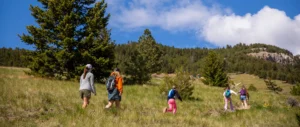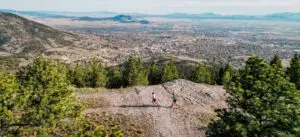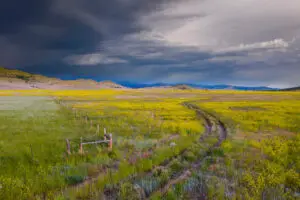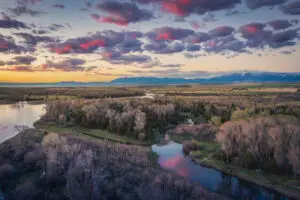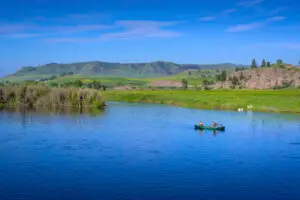Climb aboard for a time-lapse tour of private land protection under the Big Sky.
Adjust your virtual reality goggles, set the velocity to Warp Factor 8, and travel back to 1970, when Montana is emerging from over a century of corporate exploitation as a natural resource colony mined for forest, range, and mineral commodities. Growing recognition of air and water pollution led to a new environmental consciousness. On April 22, students, activists, and families gather in Helena for the first Earth Day celebration.
Inch forward in time to 1972. One hundred delegates from across Montana agree to embed environmental awareness in a new state constitution, most notably in Article IX: The state and each person shall maintain and improve a clean and healthful environment in Montana for present and future generations.
There is no definition of a “clean and healthful environment,” and few public policies to guide its maintenance and improvement. Yet gradually, Montanans devise statutes and regulations, tax codes, ballot initiatives, agency programs for fish and wildlife habitat protection, county bonds for open space protection, and many other tools to protect the place they love.
Dial the time machine down to Warp Factor 3, and we can see a time-lapse tableau of land and habitat protection driven by a robust non-profit sector, print and digital media journalists, and public servants. There’s no master plan guiding these citizens and organizations, yet they achieve protection for 6 million acres of private land, benefitting people, wildlife, and communities.
Prickly Pear Land Trust is a small piece in this tableau. Born in a Helena living room in 1995, PPLT spends the next 30 years protecting more than 26,000 acres of private land, 500 park acres, and more than 1,300 acres and 80 miles of trails in the South Hills. These metrics elicit smiles, satisfaction, and much-deserved pride in our community. Multiply these kinds of achievements in many other locales around Montana, and an even greater pride of place takes root. We will likely experience a warm, fuzzy, and appreciative glow generated by our relationship with land, water, open spaces, and the sense of belonging these treasures enhance.
Let’s pause the time machine in the present to reflect upon the past half-century of progress toward the vision of a healthful and sustainable environment. There is much to smile about, and plenty to worry about. Are we taking two steps forward for every step backward, or vice versa?
It is sad to report that, absent a lot more artificial intelligence, time machine technology is not presently able to rocket us forward in time to see what our condition is in a half-century hence. But the accrued wisdom from our past suggests we keep evolving our way toward that clean, healthful, and sustainable environment that the Montana Constitution envisions. And if we don’t, I believe the future will come back to haunt us.
Bob Kiesling was the founding executive director of The Nature Conservancy’s Big Sky office and co-founded the nation’s first conservation-focused real estate brokerage. Bob helped PPLT with early acquisitions on Mount Ascension and with the creation of Tenmile Creek Park. Bob is the co-author of the forthcoming “Saving the Big Sky: A Chronicle of Land Conservation in Montana.”

